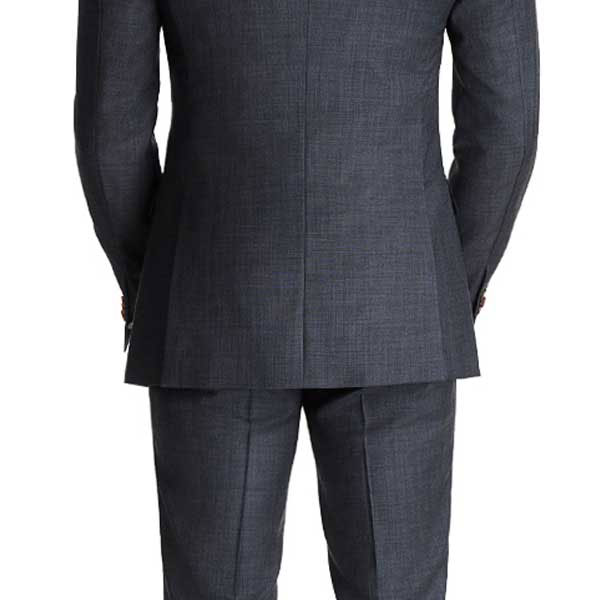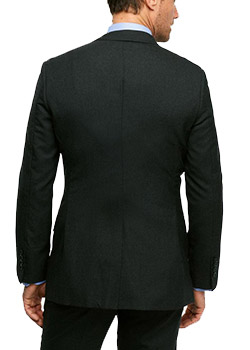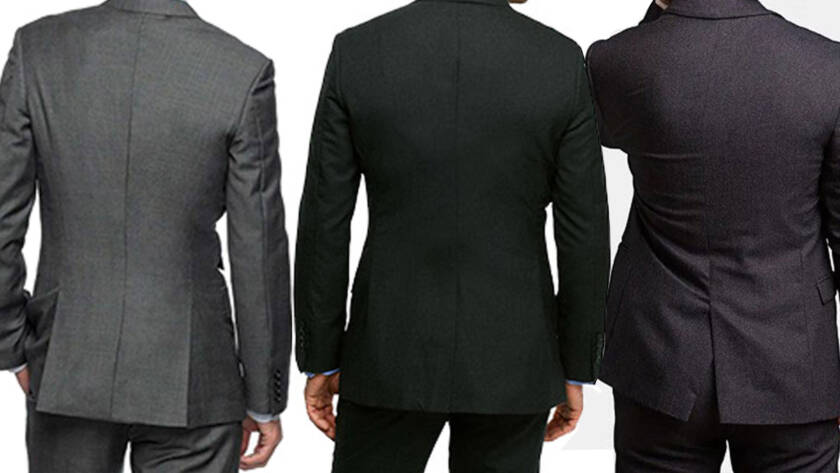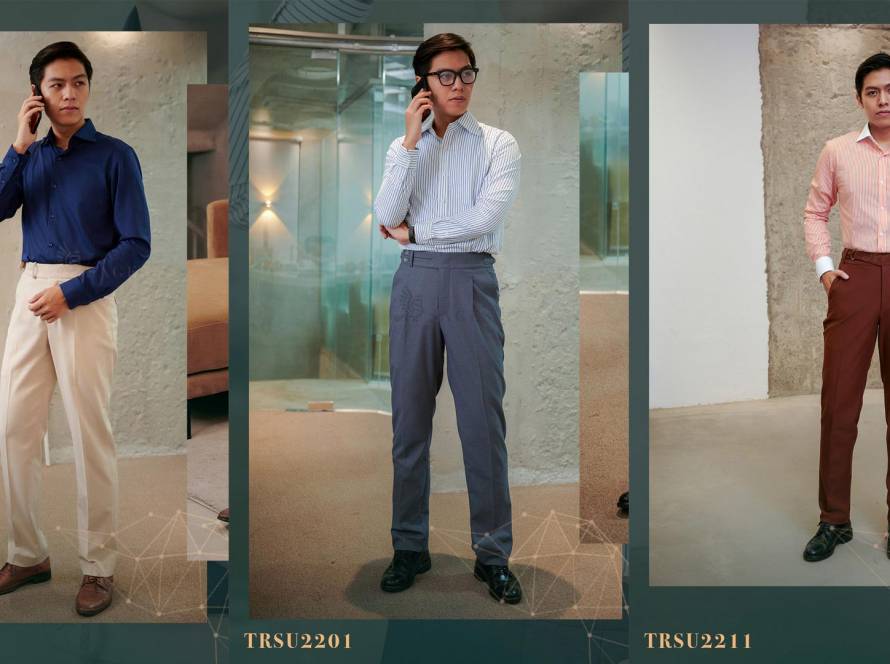When it comes to getting a bespoke suit or buying a ready-to-wear suit, people often prioritize the front of the garment and overlook a crucial detail at the back: the jacket vent. The jacket vent refers to the slit or cut at the back hem of a suit jacket, sport jacket, or any other jacket style. Understanding the significance of this element is essential in the world of bespoke tailoring, where attention to detail and craftsmanship are paramount.
Table of Contents
WHAT’S A VENT AND WHAT’S IT FOR?
A suit jacket vent, also known as the backside slit, is a prominent feature found on blazers, sport coats, and various types of jackets. The history of suit jacket vents can be traced back to their military origins. Originally designed for practicality during horseback travel, vents provided comfort to riders by allowing the jacket’s tails to gracefully fall along the sides of the horse. This functional design not only prevented fabric bunching and constriction while seated, but it also prevented unattractive creasing. Although horseback travel is rare today, the same functional principle of vents applies in any situation where you need to be seated while wearing a suit jacket. Additionally, suit jacket vents offer the added benefit of easier access to trouser pockets, as they eliminate excess fabric gathering and pulling when reaching into your pocket.
THE PROS AND CONS OF DIFFERENT JACKET VENT TYPES
1 – SINGLE VENT
The single vent is commonly found in American-designed suit jackets and was initially created for horseback riders to prevent creasing when the jacket fell across the horse’s back.
BENEFITS
The single vent offers excellent freedom of movement, making it ideal for taller, leaner individuals. Its placement at the middle rear is also favorable for men with more weight or muscle in their rear, such as those with squatters’ butts.
NEGATIVES
The single vent is often associated with mass-produced, off-the-rack suit jackets, blazers, or sports coats, which can be cheaper and of lower quality. It is less expensive for suit companies to manufacture single-vented jackets due to the reduced fabric and labor required for production. Additionally, reaching into your pockets may expose your backside to those behind you.

2 – DOUBLE VENT
The double vented jacket is commonly found in British-designed suit jackets, blazers, and sportcoats. Originally designed for horseback riding, it continues to be used for both aesthetics and functionality.
Creating double vents requires more fabric and labor, making them less common in off-the-rack suits. They are typically seen in custom-made, made-to-measure, and bespoke men’s suits or higher-end off-the-rack options.
BENEFITS
Double vented jackets offer improved functionality, as they minimize wrinkling and creasing when seated or reaching into pockets. They provide a balance between functionality and appearance for most body shapes.
NEGATIVES
The main downside of double vents is their cost, as they are often available only with custom-made or high-end off-the-rack suits. Finding double vented jackets can be challenging for most men. Additionally, for those with a large rear, the fabric in the middle of each vent may catch or sit on the bum, creating the illusion of excess fabric.

3 – NO VENT
The no vent option is commonly found in Italian-designed jackets, catering to the leaner frames of many Italian men.
BENEFITS
The absence of vents can complement a trim and lean physique, particularly for individuals with a V-shape body and broader shoulders. When standing upright, a no vent jacket can provide a streamlined look.
NEGATIVES
The no vent option offers limited freedom of movement and can be uncomfortable to wear. Sitting frequently and for extended periods may cause fabric creasing. It may also be unflattering for individuals with more body weight, especially if they are shorter. Additionally, the restricted movement and potential fabric creasing can make a no vent jacket uncomfortable for those with a larger rear or who frequently put their hands in their pockets.
Typically, individuals choose a no vent jacket either due to a lack of awareness about other options or because they prefer the sleeker, streamlined look despite sacrificing functionality.

Additional note when wearing vent
When it comes to your suit jacket or blazer pockets, it’s advisable to refrain from putting your hands or any objects inside them, as doing so can cause stretching and misshaping of the fabric. In terms of vent styles, the simpler center vent is generally considered more casual, while the more elaborate side vents are seen as more formal.
However, it’s important to note that vent styles alone do not always determine the level of casualness or formality. Other factors, such as construction and fabric, also come into play. For instance, a single-vented jacket made with fine fabric and a fully structured design can be more formal than an unstructured, double-vented jacket with coarser and more casual fabric. All things being equal, the side-vented style tends to be perceived as more formal.
WHICH JACKET VENT IS RIGHT FOR YOU?

Although you may have acquired a considerable amount of information about jacket vents, choosing the right vent style requires consideration of various factors, such as the occasion and the location.
In terms of formality, you can imagine it simply: the simpler the vent style, the more understated it appears, while a meticulously crafted vent on a suit jacket signifies a higher level of formality.
However, the vent style is not the sole determinant of formality. Two other factors to consider are the construction of the suit jacket and the fabric used.
For example, if a suit jacket with a center vent is tailored with a full canvas construction using premium fabric, it will naturally be more formal than a jacket with double vents but without a structured construction and made from a more relaxed fabric like linen or cotton. On the other hand, if the jacket construction and fabric are the same, a jacket with double vents will be more formal.
Therefore, if you are looking for a suitable vent style for casual outings or meeting friends, opt for a single vent. For more important occasions, such as client meetings or company gatherings, switch to double vents.
Through this article, you have gained some understanding of different vent styles for suit jackets, as well as the advantages and disadvantages of each. This will help you make an informed decision when getting a bespoke suit. If you have any further questions or want to learn more, please contact our hotline at +84 886 219 608 or chat with us on our Facebook fan page for assistance.




